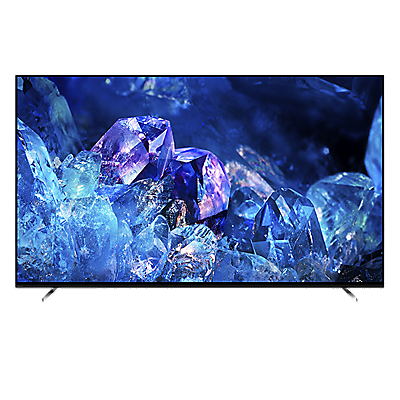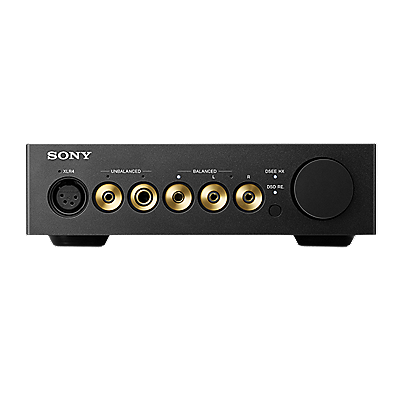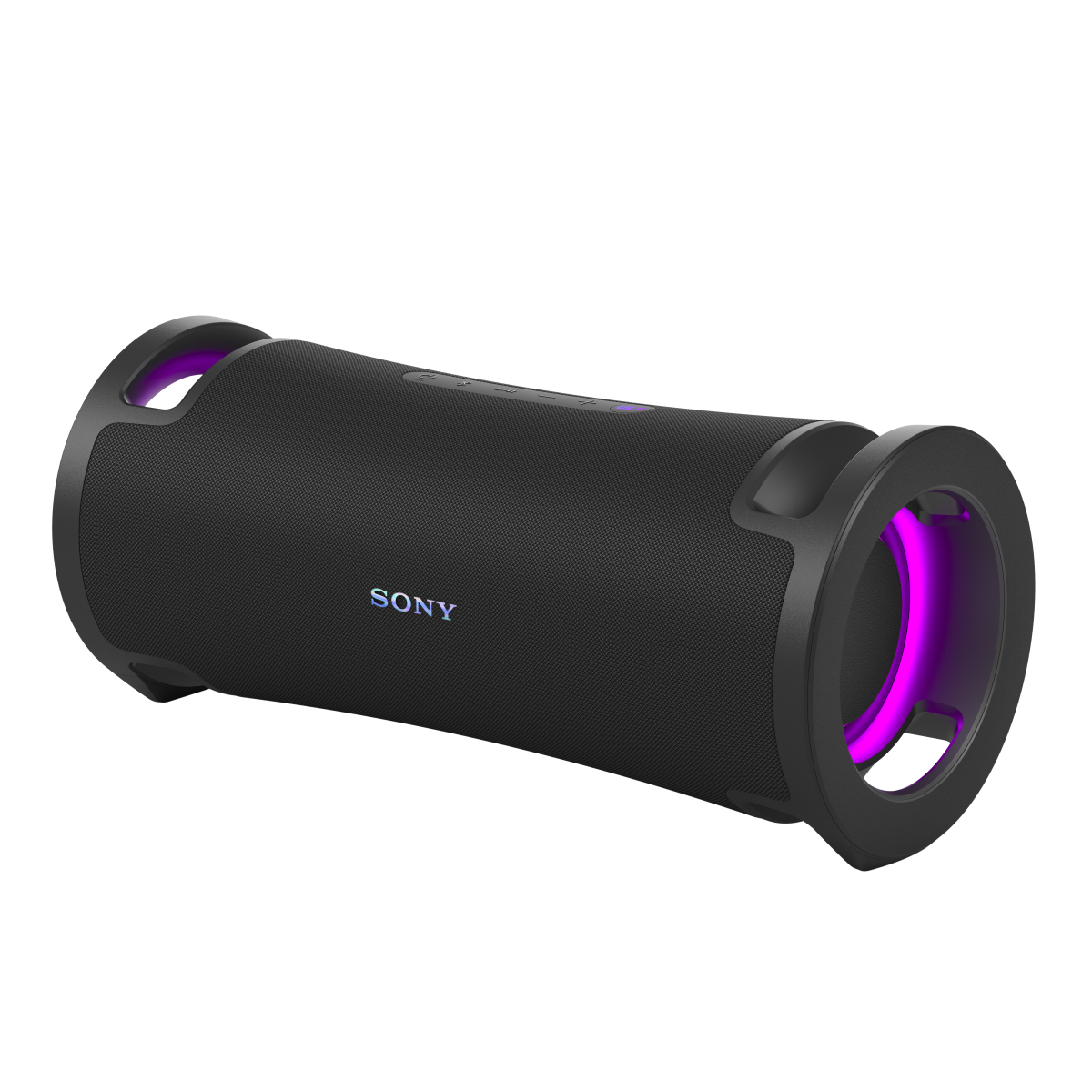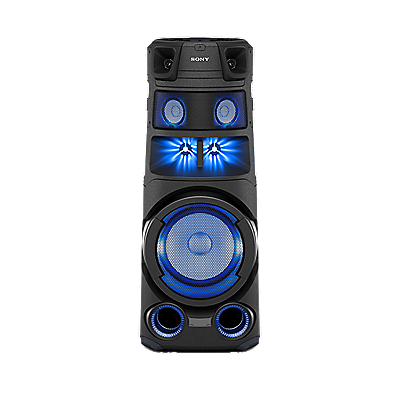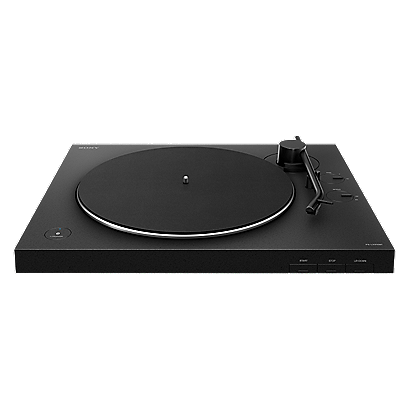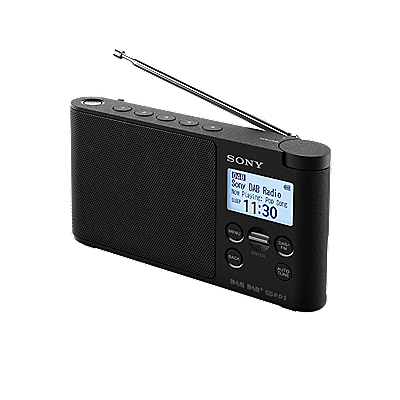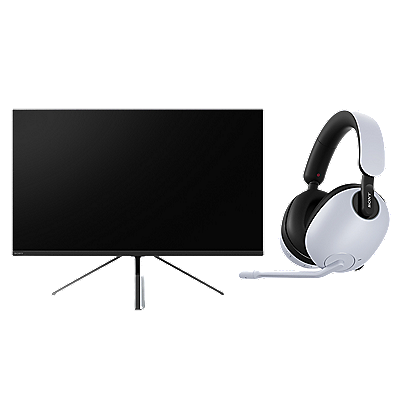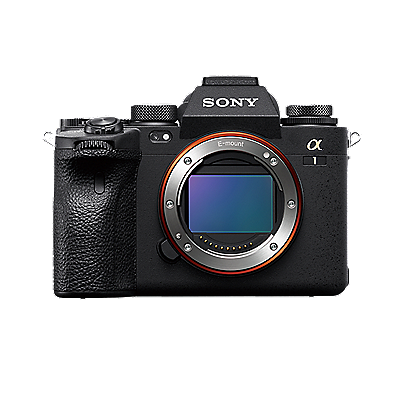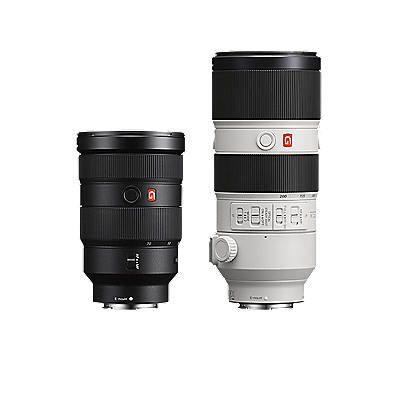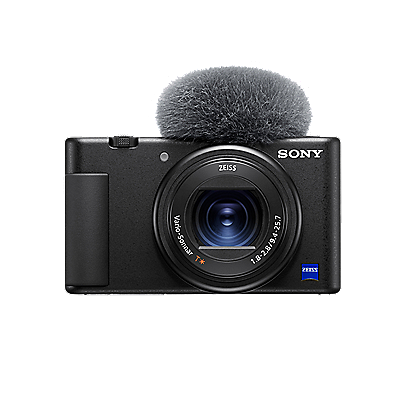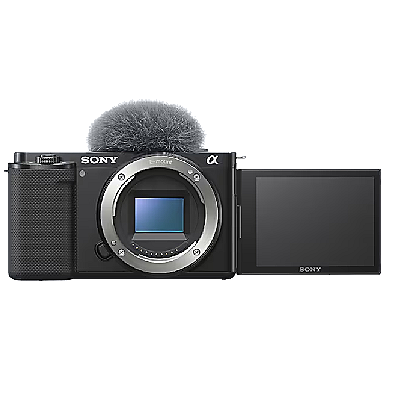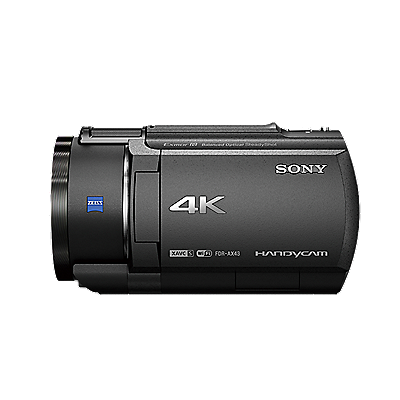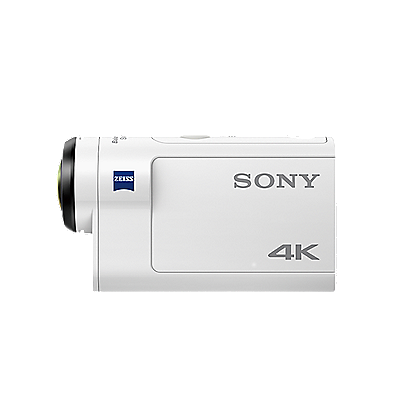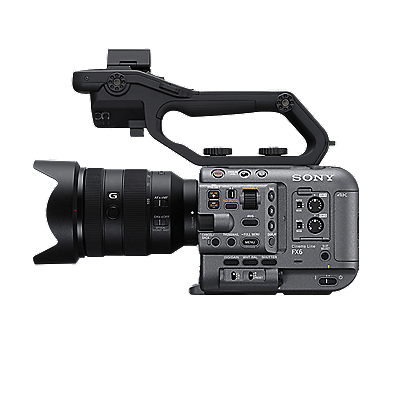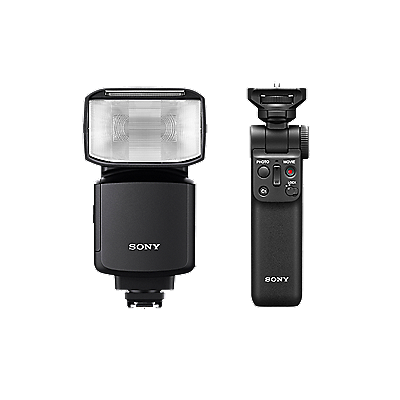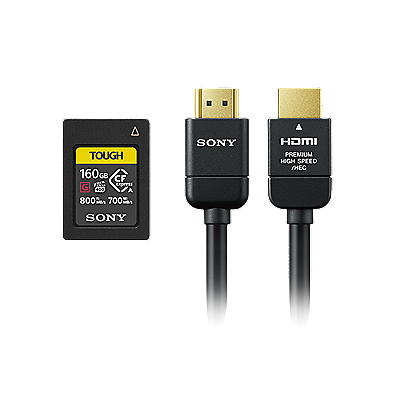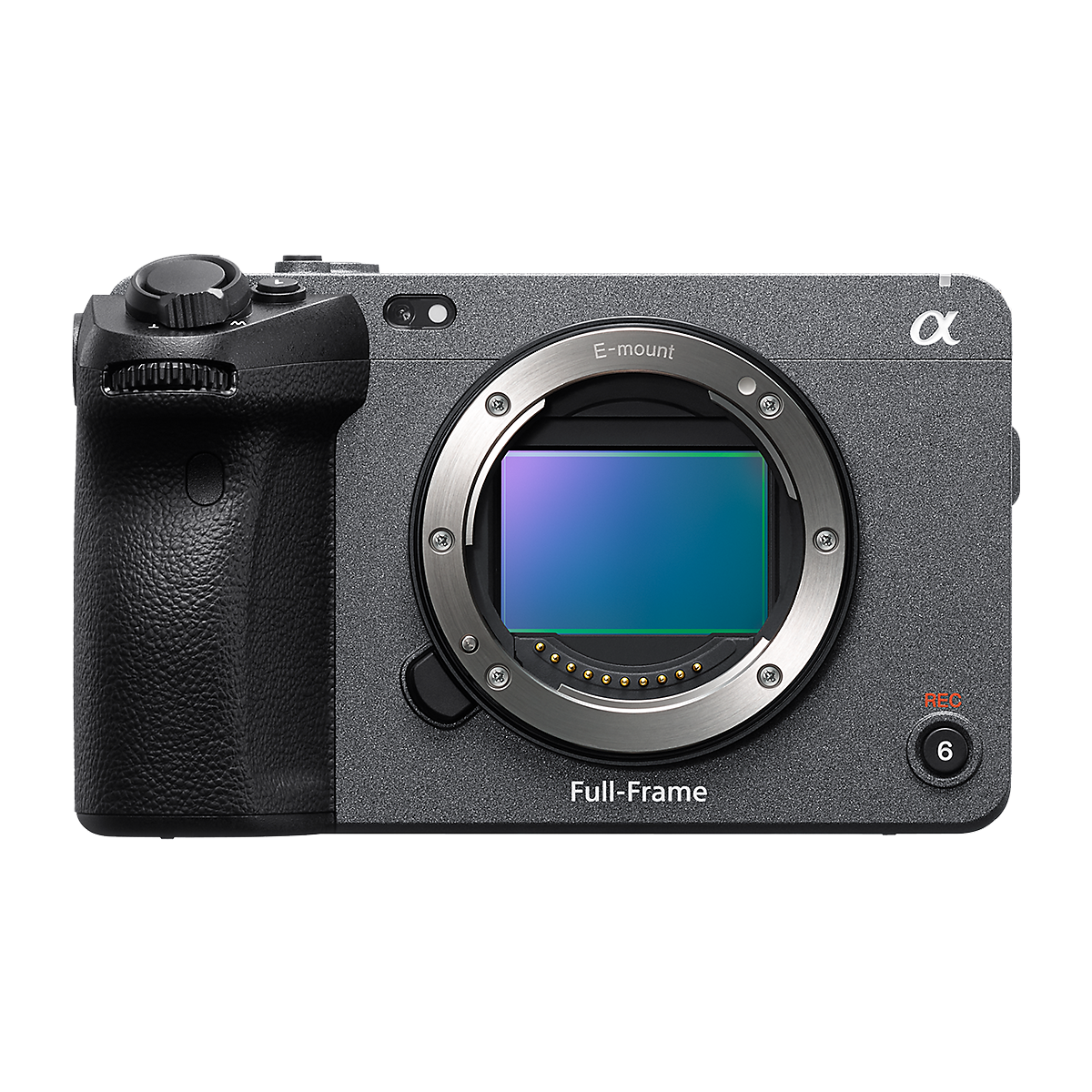מצלמות עם עדשה ניתנת להחלפה
-
ILME-FX3
ILME-FX3 Four advantages of Sony's lenses in video shooting video transcript
Alpha logo
Title “Advantages of Sony's E-mount lenses in movie shooting” over side-on slow-motion dollying shot of user carrying camera in woodland, then close-up of camera with strap being raised by user for use, then front left view of camera with XLR handle attached, then front left view of movie camera held in user’s palm, then close-up of camera body with lens mounted and adjusted by hand, then shot of user on riverbank with handheld camera
Four-way split screen with female model, caption “Focusing;” close-up of lens, caption “Zooming;” riverbank user, caption “Stabilisation;” and close-up of lens, caption “Iris control”
Narration: “This video will outline the advantages of using Sony’s E-mount lenses together with cameras to enhance your video shooting experience. Focus, zoom, image stabilisation, iris control. As you will see, Sony has unique advantages in these four important areas. By the end of this video, you will see how a combination of Sony’s E-mount lenses with cameras can greatly improve your video shooting experience.”
Left split-screen panel maintained bright while others are dimmed. Other captions: “Autofocus,” “Manual focus,” “Manual focus during autofocus,” and “Focus breathing compensation”
Narration: “Let’s start with focus. There are four distinct points where Sony’s E-mount lenses can offer clear benefits in this area: autofocus, manual focus, manual focus during autofocus, and focus breathing compensation. These days, autofocus in video shooting is more important than ever before. With advancements in technology, the number of scenes that depend on reliable autofocus has increased dramatically.”
Caption “High resolution” over sequence showing female model walking through city at night
Narration: “Shooting in high resolution 4K is now the industry standard.”
Caption “Shallow depth of field” over portrait of female model with significant background bokeh, then sequence showing female dancer with close-ups showing background bokeh
Narration: “Expression with extremely shallow depth of field created with full frame cameras with large-aperture prime lenses.”
Caption “High framerate” over slow-motion shots of female athlete, then of motorcycle stunt at night
Narration: “Slow-motion footage by shooting at a high framerate of for example 120p.”
Caption “Remote shooting” over shot of user with gimbal following subject running in city, then shot of drone with camera attached, then drone shot of waterfall, then shot of camera on rig on roof of building
Narration: “And remote shooting in situations where gimbals and drones are used, where the manual focus ring is beyond the operator’s reach.”
Close-ups of lens and aperture ring, followed by iris, then shot of drummer and drumkit on grassland, then actors walking on oceanside pier, then shot of FX6 body and lens, then sequence of female performer dancing in studio with streamers
Narration: “Conventional focus systems force the videographers to stop down the aperture to avoid the subject being out of focus, but also limit the expression of bokeh effects. Under conditions such as these achieving optimal focus has been a challenge for conventional mirrorless system lenses. But not any more. Sony lenses are engineered with the latest technology to overcome these obstacles.”
Sequence of shots of cinematographer adjusting camera rig
Narration: “Let’s see how they differ from conventional lenses. A professional cinematographer will shoot in all these situations and give us his opinion.”
Caption “Cinematographer Carlos Toraya” over interview with cinematographer
Cinematographer: “My name is Carlos Toraya, I am a cinematographer doing mostly commercial work and I’ve been doing it over ten years.”
Caption “4K 120P F1.4 Gimbal” over sequence of E-mount lens being mounted on camera body, then body being installed on gimbal, then cinematographer shooting female dancer on oceanside pier
Narration: “Shooting in 4K 120p with a larger aperture F1.4 lens using a gimbal, the videographer will move along changing the distance from the subject using eye autofocus, and the camera is the α7S III.”
Caption “Conventional lens” over sequence of female dancer with inset of magnified face region showing occasional blurring around the eye
Narration: “This is footage shot with a conventional 35mm F1.4 lens. Please watch the dancer’s eye to gauge the accuracy of the eye autofocus. Notice how the autofocus in this footage is unstable, drifting in and out.”
Caption “Lens with latest technology” over similar sequence of female dancer with inset of magnified face region, but this time showing constant focus with no blur around the eye
Narration: “This is footage shot with the same camera using the Sony 35mm F1.4 G Master. Please watch the dancer’s eye again, to gauge the accuracy of the eye autofocus. The focus is stable, and remains without losing the eye.”
Sequence of cinematographer (sometimes with assistant) shooting female dancer on oceanside pier with camera mounted on gimbal
Narration: “The ability to maintain accurate and stable autofocus even under these extremely challenging conditions is evidence of how well autofocus will perform in a wide range of scenarios.”
Caption “Focus actuators” over sequence showing line drawing of camera body and lens, with lens focus groups being moved by internal actuators, controlled by feedback loop from sensor and BIONZ XR image processing engine
Narration: “This is because the lens incorporates focus actuators which are highly responsive to the autofocus calculations on the camera.”
4-way split screen with captions “High resolution,” “Shallow depth of field,” “High framerate,” and “Remote shooting”
Narration: “The combination of Sony’s E-mount cameras and lenses which employ the latest autofocus actuators can deliver this level of focus accuracy under these circumstances.”
Cinematographer: “I don’t often use the autofocus feature because there are a lot of situations in which I need to pull my own focus, but with the Sony body-lens combination the focus is so precise that I can for example shoot at 4K at 120fps which is generally a situation in which it’s very difficult to achieve good focus.”
Sequence of cinematographer solo shooting female dancer on oceanside pier with camera handheld
Narration: “Having a reliable autofocus also means less people required to operate it, allowing for scaled-down crews or even solo production.”
Caption “Manual focus” over earlier split screen
Narration: “Now, let’s turn to the benefits when shooting with manual focus, which is crucial when you want to shift focus at a particular speed with high repeatability.”
Sequence showing focus transition from foreground clothes hanging on line to tall building in distant background at night
Narration: “Rack focus, for example, is an effective way to guide the eyes of the viewers within the frame.”
Caption “Linear Response MF” over sequence showing cinematographer handling FX6
Narration: “Sony’s E-mount lenses offer a feature called Linear Response Manual Focus to assist in achieving accurate and smooth focus control. The feature is intuitive, and it delivers more responsive operation of the focus ring, with responsiveness compared to that of some mirrorless system lenses without this feature.”
Caption “Linear Response MF” over sequence showing two subjects sitting on sofa being shot by cinematographer who is closer to one (foreground) subject than the other (background)
Narration: “Let’s compare lenses without and with Linear Response Manual Focus and see just how useful it is when shifting focus from a subject close to the lens to another that’s further away.”
Caption “Without Linear Response MF” over sequence showing focus transitions from foreground to background subject and back in response to rotation and return of focus ring, with inset showing focus ring. The focus does not in fact return to the foreground subject, who remains blurred
Narration: “Using a lens without Linear Response Manual Focus, the focal point shifts depending on rotation speed of the focus ring. As you can see, even if the ring returns to its original position, the focus doesn’t return. This is because the rotation speed differed when it started to be turned and when it came back. High repeatability is crucial in serious video shooting, and using manual focus from conventional mirrorless lenses might be challenging in such situations.”
Caption “With Linear Response MF” over similar sequence showing focus transitions from foreground to background subject and back in response to rotation and return of focus ring, with inset showing focus ring. With Linear Response MF, the focus now returns correctly to the foreground subject
Narration: “Now, let’s look at Sony’s E-mount lenses that support Linear Response Manual Focus. Here, the focal point moves based on how far the ring is physically turned. In other words, the angle of rotation. This makes it easier to control the focal point in a linear manner and return it precisely to its original position, leading to high repeatability.”
Caption “Manual focus during autofocus” over earlier split screen, followed by menu image showing selection of “AF Assist”
Narration: “Now, let’s turn to manual focus during autofocus, which is called AF Assist. With this feature you can use manual focus during autofocus allowing for greater flexibility when changing subjects.”
Caption “Manual focus during autofocus” over sequence showing cinematographer shooting models walking on oceanside pier, with inset showing operation of the AF Assist feature, allowing the cinematographer to intervene in an otherwise autofocused scene to manually shift focus onto a new target when desired
Narration: “When you’re shooting moving subjects with autofocus, it is also possible to change the focus target by touching the LCD screen. However, there are situations where touching the LCD screen might limit the videographer’s mobility and operability. In addition, with this AF Assist, you can use manual focus during autofocus instantly, by rotating the focus ring at the intended speed. The moment you stop rotating the focus ring, the camera will resume autofocus and continue to track the new subject. This feature allows you to shift the focus on the intended target manually while using the autofocus to track moving subjects.”
Cinematographer: “This feature is great because it allows me to keep the precision and flexibility of the automatic focus while at the same time maintaining the control that I get from the manual focus, such as the speed of the focus and the subject that I want in focus.”
Caption “Focus breathing compensation” over earlier split screen
Narration: “The final area of focusing is the breathing compensation feature available on the latest Alpha model camera.”
Caption “Focus breathing” over sequence showing focus transitions between female subject on sofa in background and flowers in foreground, with noticeable focus breathing, i.e. widening of the angle of view when the focus transitions to the foreground, and narrowing when it transitions to the background
Narration: “Perhaps you’ve noticed times where the angle of view shifts while shifting the focus. This is called focus breathing. The latest Alpha model camera incorporates a feature that minimizes focus breathing. This is accomplished by calculating the amount of adjustment needed for compatible Sony E-mount lenses in real time.”
Sequence showing selection of “Breathing Compensation” on the menu screen
Narration: “Let’s compare the results when breathing compensation is turned off and on.”
Caption “Breathing compensation” over split screen, with left caption “Off” and right caption “On*” with focus breathing apparent on left sequence but not on right sequence
Narration: “When turned off, the angle of view wobbles depending on where the point of focus is. However, with the feature on, you can see that focus breathing is minimised and the entire image is stable to ensure videographers have the expression they intended.”
Cinematographer: “This feature is very useful because it allows me to minimise the focus breathing that occurs in situations that require it.”
Caption “Zooming” over earlier split screen
Narration: “Sony offers some lenses equipped with a power zoom for video shooting.”
Sequence showing cinematographer with tripod-mounted camera with power zoom lens, shooting a scene where a model is having make-up applied, and the power zoom is used to zoom in very slowly at constant speed on the model’s face
Narration: “With power zoom lenses, zoom operation is electronically supported to provide superior control. One example is when you want extremely slow zoom at a steady speed, which is difficult to achieve with a non-power-zoom lens. As you can see here, slow zoom at a fixed speed can move in close to the actor’s face.”
Cinematographer: “In filmmaking we often use camera moves such as pans and tilts but sometimes we also want to use zooms to convey some expressions. It’s often very difficult for a single operator to have a constant zoom speed while just using the zoom ring, so with the Sony power zoom it is very easy for an operator to achieve a constant zoom speed, and I think it’s great that Sony has a power zoom in its lineup.”
Caption “Stabilisation” over earlier split screen
Narration: “The third area where Sony gives you an advantage is stabilisation.”
Caption “Optical image stabilisation – Active Mode” over sequence showing cinematographer shooting dancer with handheld camera
Narration: “Since the release of the α7S III, Active Mode optical image stabilisation has become a crucial feature supporting solo shoots.”
Sequence showing menu screen with “Steady Shot” being set to “Active,” then an array of E-mount lenses, then a series of shots of E-mount lenses being mounted and unmounted from camera bodies
Narration: “In general, it provides greater flexibility in video shooting, reducing the need for large equipment. Of course, Active Mode works with any lens that’s compatible with Sony’s E-mount cameras.”
Another sequence of cinematographer shooting dancer with handheld camera
Narration: “However, Sony’s E-mount lenses are optimally designed to maximise stabilisation performance. This is because the camera knows every inch of Sony’s E-mount lens optical design. Let’s see the comparison.”
Caption “Optical image stabilisation” over split screen; left caption “Off” and right caption “Active mode” with similar sequence of dancer shot by cinematographer who is also moving significantly. Camera shake is much reduced in the right sequence
Narration: “This level of compensation can only be achieved because Sony lenses were designed to work perfectly with Sony camera bodies. The cameras know the precise optical performance of Sony’s E-mount lenses, which leads the stabilisation performance to its maximum.”
Cinematographer: “Usually in video production we have to use a lot of large gear such as gimbals that are quite heavy and we have to calibrate to achieve stabilisation, but with the combination of the Sony camera and the lens that has the built-in stabilisation, we’re able to achieve great results without having to use that large equipment.“
Caption “Iris control” over earlier split screen
Narration: “Finally, let’s look at the advantages of using Sony lenses in the area of iris control.”
Captions “Aperture ring” then “Aperture click switch” over lens close-up showing aperture ring and aperture click switch, then shot of FX6 with user adjusting aperture ring, then close-up of aperture click switch set to “OFF” before user rotates the aperture ring
Narration: “The latest Sony lenses are equipped with an aperture ring and an aperture click switch offering seamless iris control for video shooting. The aperture ring provides the immediate response that videographers need. In addition, the aperture click on-off switch allows the aperture ring click stops to disengage, which the ring moves smoothly and quietly, providing seamless non-step silent control if you prefer.”
Caption “Variable ND Filter” over sequence illustrating the darkening effect of the variable ND filter on the image as it changes from 1/4 to 1/128, then another sequence using a graphic representing the iris opening and the ND filter simultaneously darkening, showing background bokeh increasing as the iris opens, but the brightness remaining constant due to the ND filter darkening. The sequence then reverses with the iris closing and background bokeh diminishing, but the brightness remaining constant due to the ND filter lightening
Narration: “The non-step silent controls shine when the camera’s equipped with an electronic variable ND filter. Used together, the aperture can be changed smoothly while maintaining the same brightness, adjusted by the variable ND filter.”
Sequence of female model in focus with light aircraft in the background, showing increasing bokeh as the iris is opened but maintaining constant brightness as the ND filter adjusts accordingly
Initial captions “FX6, 1/120 sec., ND Variable AUTO” and “F16”
Final captions “FX6, 1/120 sec., ND Variable AUTO” and “F2.8”
Then side view of FX6 showing ND Filter controls
Narration: “As you see by keeping an eye on the background, the bokeh effect changes while keeping the image brightness. This gives videographers an easy, flexible way to shoot, with a smooth transition of depth of field while reducing the cost of purchasing additional special gear.”
Cinematographer: “The variable ND in the body and the clickless iris on the lens allow for effects such as depth of field transition, which is a very difficult effect to achieve without this combination.”
Sequence of views of camera bodies with E-mount lenses mounted, with bodies and lenses changing alternately
Narration: “The benefits of Sony lenses go beyond just their features. The size and design of the lenses have also been tailored to complement the camera bodies. Sony has been constantly working to make both camera bodies and lenses as compact as possible, to provide videographers with more mobility and flexibility.”
Captions “Focusing,” “Zooming,” “Stabilisation,” and “Iris control” over earlier 4-way split screen, then several shots recapping earlier scenes
Narration: “All the benefits we’ve been describing relating to focus, zoom, stabilisation and iris control have been achieved and maximized thanks to the combination of the camera and Sony’s E-mount lenses. Cameras and lenses designed to work together, to perform at their fullest. This has only been realised because they were designed by Sony.”
Closing sequences of user on top of truck shooting rock formations, then hiker running against mountainous background, film crew planning shot, camera rig on wire rope, diver in water, surfer in action, user at lakeside, climbers in mountain blizzard, user in cave system, and quick-motion shot of sun and clouds around high mountain peak
Narration: “Sony will continue striving to create new shooting styles, features, workflows, and means of visual expression, overturning the common-sense methods of video shooting in the past.”
SONY logo
